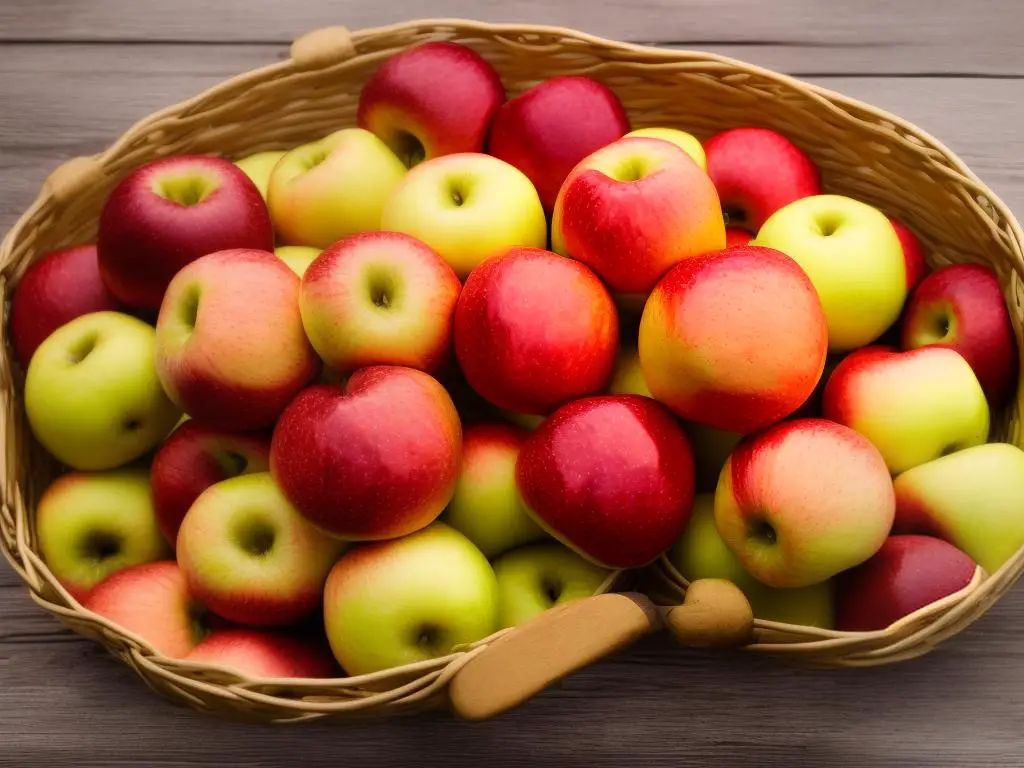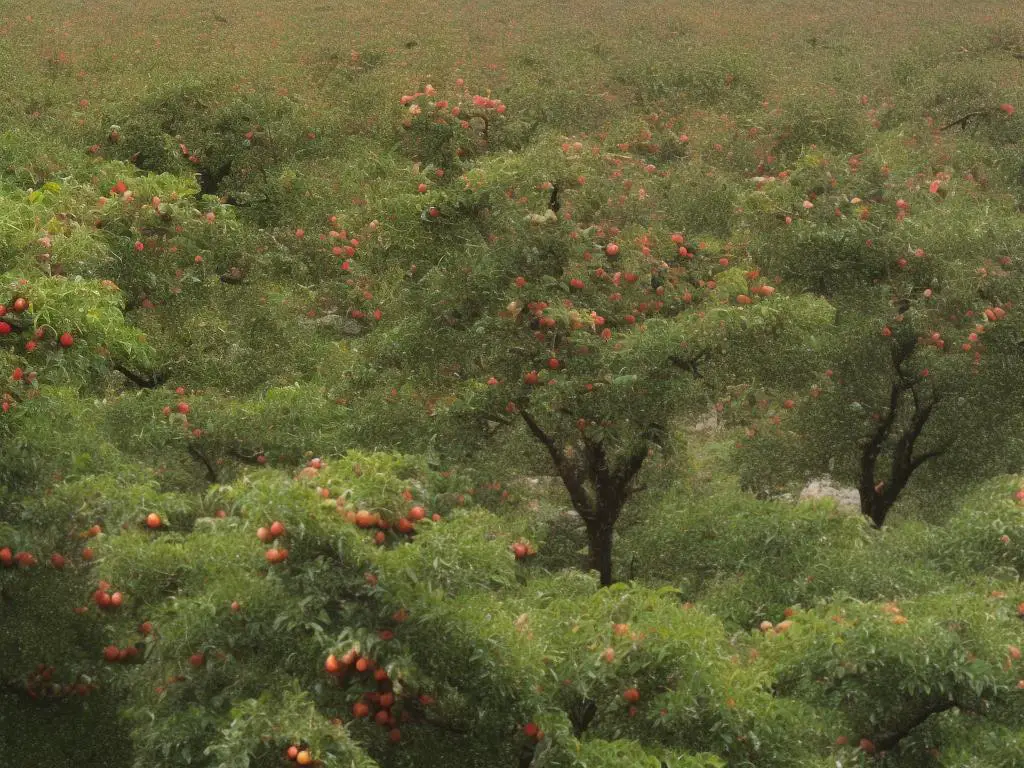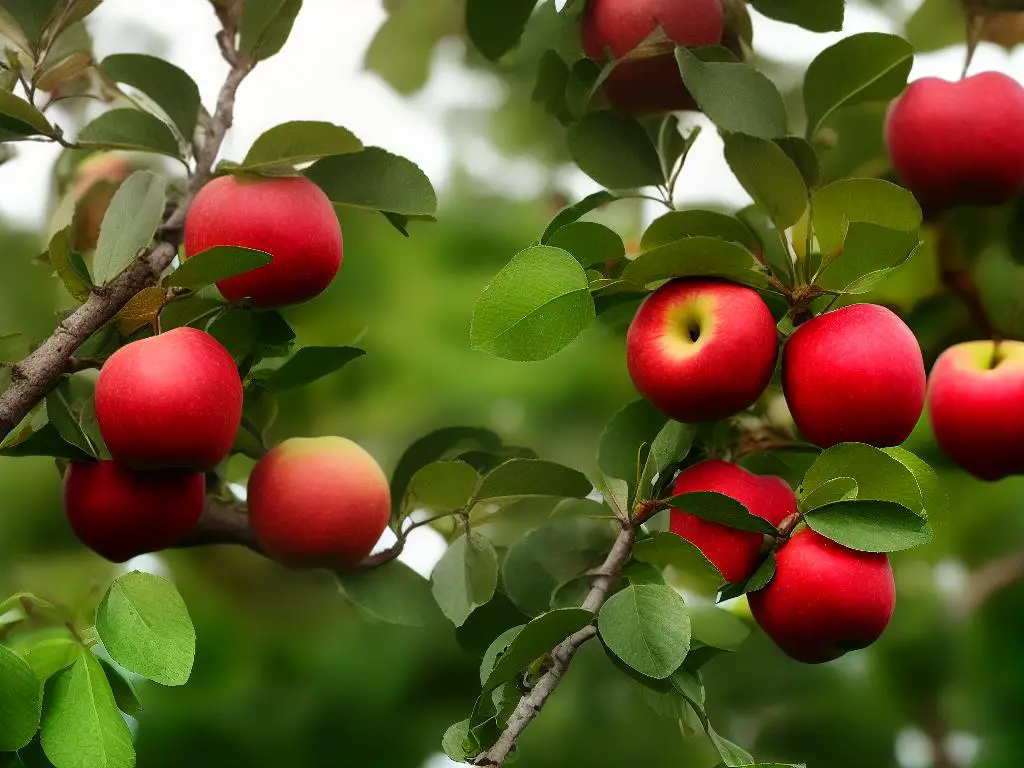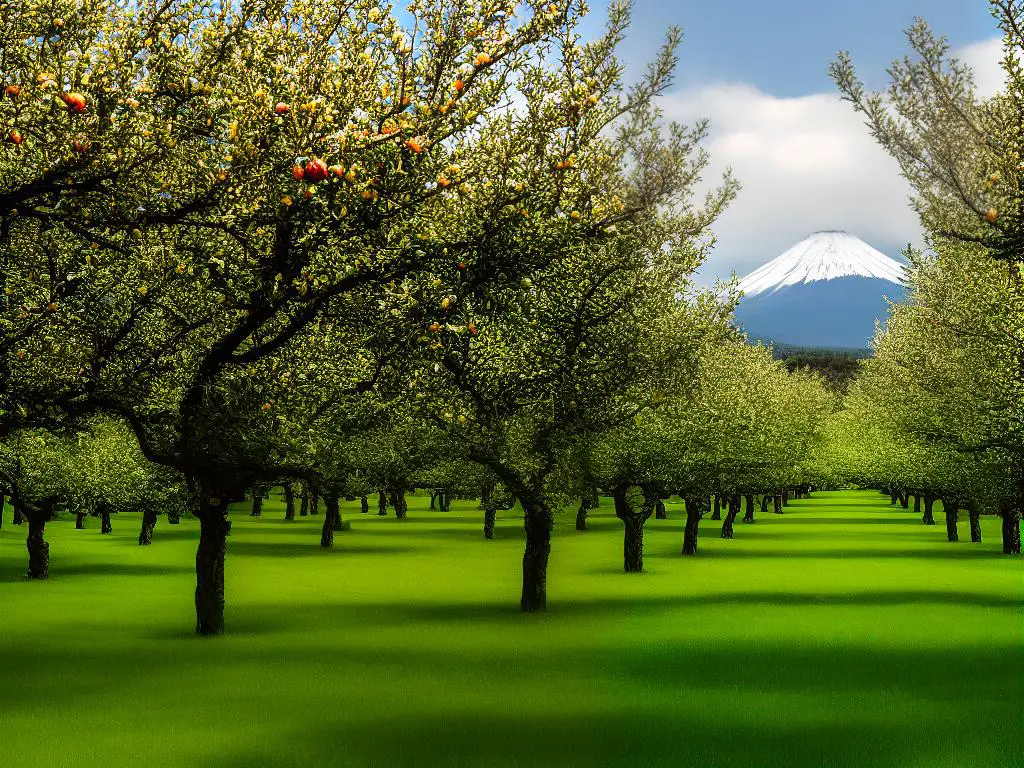With a name as intriguing as its history, the Aztec Fuji apple is more than just an apple; it’s a symbol of centuries-old heritage and a testament to the miracles of selective cultivation. Embarking on a journey into the fascinating world of Aztec Fuji apples allows us a glimpse into the annals of agrarian history and marvel at the artistry involved in perfecting its unique features. Throughout this journey, we’ll learn about the roots of this distinct apple variety along the fertile valleys where it was first discovered, the intricate cultivation practices that keep its legacy alive, and the desirable characteristics that make it a favorite around the globe.
History and Origin of Aztec Fuji Apples
Aztec Fuji Apples
Despite the somewhat misleading name, Aztec Fuji apples did not originate with the Aztecs. Fuji apples, of which the ‘Aztec’ is a specific strain, are a hybrid apple variety that was first developed in Japan in the 1930s. Named after the town of Fujisaki where it was first cultivated, Fuji apples are a crossbreed of two American apple varieties – the ‘Red Delicious’ and ‘Ralls Janet’.
The Aztec Fuji Strain
The ‘Aztec Fuji’ moniker actually refers to a strain of Fuji apples that was developed in the United States in the early 1970s. An American company named Stark Bros Nursery & Orchards Co. developed the Aztec Fuji strain, patenting it in 1972. There is no direct link between the Aztec civilization and this apple variety, the naming could be attributed to the nursery’s marketing strategy to make this strain stand out among plethora of others.
Origins and Traits of Aztec Fuji Apples
Aztec Fuji apples, developed primarily for their high level of resistance to pests and diseases, have simplified the process of cultivation and boosted yields. These apples are the result of crossbreeding ‘Fuji’ apples with various other apple varieties, always selecting for the most favorable traits. Grown extensively across the United States today, Aztec Fuji apples enjoy popularity for their crisp texture and the sweet, juicy flavor that is a delight to apple aficionados.

Cultivation and Characteristic Features of Aztec Fuji Apples
Growing Conditions for Aztec Fuji Apples
Aztec Fuji apples stand out in their resilience, being part of a limited category of apple trees that can withstand diverse climatic conditions and geographical terrains. These trees excel in sandy, silt, or clay loam soils with a pH range of 6.0-7.5, and they favor cooler climates, requiring protection from abrupt drops in temperature. For an Aztec Fuji apple tree to thrive, it should be situated in an area with full sun exposure and ample space, as these trees can potentially grow between 10 to 15 feet tall. It’s important to regularly prune these trees, preferably in late winter or early spring. This not only contributes to the health of the tree, but also enhances the quality and volume of the fruit.
Appearance and Texture
Aztec Fuji apples are distinguishable by their vibrant and variegated shades of red and pink, with subtle yellow undertones. These medium to large-sized fruits possess a consistently round shape and are encased in a thick, durable skin that retains its crispness. When it comes to texture, the Aztec Fuji apple is crisp and juicy, offering a refreshing bite. The flesh is a creamy white color that remains remarkably bright, even after being cut and exposed to air.
Honing Skills on Aztec Fuji Apples
Becoming skilled with Aztec Fuji apples is a delightful journey through its multifaceted flavor and remarkable versatility. Temptingly sweet with a touch of tartness, the unique flavor profile of these apples is an exploration of refined taste profiles. The high sugar content makes for a delightful sweetness, while a subtle tart undertone ensures a balanced palette. Crunchy and replete with refreshingly crisp notes, they are a treat to consume fresh, and equally impeccable for culinary uses in baking or cooking. Moreover, the Aztec Fuji apple offers the convenience of long storage life, retaining its crispness and flavor for a commendable period, provided they are stored correctly. The distinct attributes of these apples have found favor among apple enthusiasts and growers alike, making them a valuable subject of interest and expertise.

Uses and Health Benefits of Aztec Fuji Apples
Unlocking the Potential of Aztec Fuji Apples
The greatness of Aztec Fuji apples lies in their remarkable versatility that extends to myriad culinary applications. Whether relished raw for their pure, unadulterated sweetness or used to enhance flavors in diverse dishes, they make their presence felt.
If you’re inclined towards traditionalism, Aztec Fuji apples don’t disappoint. They lend themselves beautifully to classic preparations such as apple pies and tarts, bringing in the perfect quotient of sweetness without an overload of additional sugars. Adding a refreshing twist to apple sauces, chutneys, or salads, they work wonders in playing up flavors. If you’re looking at expanding your repertoire, these apples are perfect for juicing, cider preparation, or even cocktail mixing. The power of Aztec Fuji apples indeed lies in the hands of those who know how to wield it skillfully.
Exploring the Benefits of Aztec Fuji Apples
Partaking in the Aztec Fuji apple offers a delight to your taste buds while serving up benefits to your health. It’s not merely an apple; it’s a gift of wellness.
Bringing substantial fiber content to the table, these powerful fruits can be instrumental in maintaining a healthy digestive system. They may have the potential to lessen problems such as constipation and other stomach disorders. Aztec Fuji apples are nutrition powerhouses, especially for vitamin C. This vital vitamin can give your immune system a boost and promote overall well-being.
Taking their health benefits a step further, they feature polyphenols that have been linked with an improvement in heart health. These antioxidants may help regulate blood pressure and potentially battle high cholesterol.
But the health advantages don’t stop there. Aztec Fuji apples are treasure troves of antioxidants, warriors against oxidative stress and inflammation. They may decrease the risk of enduring conditions like heart disease, diabetes, and even specific cancers. Indulging in Aztec Fuji apples can help fulfill a sweet craving while concurrently supporting a healthy diet and lifestyle.
In essence, the act of welcoming Aztec Fuji apples into your regular diet can be a delightful win for both your taste buds and health.

Tips on Growing Aztec Fuji Apple Trees
Cultivating Aztec Fuji Apple Trees
For hobbyists and commercial farm owners alike, Aztec Fuji apple trees come across as a robust variety offering a good yield with low maintenance requirements. Mastering the cultivation of these trees begins with understanding the ideal planting process. Aim for late winter or early spring – when the tree is still dormant. This will give it a head start as the growing season kicks off.
The soil should offer good drainage, and the tree needs a location that receives plentiful sunlight for a large part of the day. This will stimulate optimal growth and health of your tree. Be strategic when choosing a spot for the tree. It should have at least 15 feet of space all around to ensure its growth isn’t hindered by other plants or structures.
Pruning and Pest Control
Pruning and pest control are key to maintaining a thriving Aztec Fuji apple tree. Prune your tree at least once a year, ideally in late winter when the tree is still dormant. This process helps keep the tree healthy, enhances its shape, and promotes better fruit production. Pay particular attention to removing dead or diseased branches to prevent the spread of diseases. When it comes to pest control, diligent observation is crucial. Watch out for common apple pests like aphids, codling moth larvae, apple maggot, and scale. If you notice any infestations, use appropriate organic or chemical pest control methods to manage them.
Harvesting Aztec Fuji Apples
Harvesting Aztec Fuji apples is an exciting stage that requires careful timing. These apples typically mature in late September to early October. Wait to pick your Aztec Fuji Apples until they are fully ripe, as they do not continue to ripen after picking. Signs of ripeness include a full color change from green to red or yellow, a slight give when pressed lightly, and a sweet-tasting sample fruit. Once harvested, these apples can be directly consumed or stored for later use. In proper storage conditions, Aztec Fuji apples can be kept fresh for as long as six months, providing a delicious treat well into the colder seasons.

Whether you’re an apple enthusiast, a seasoned orchardist, or a casual hobbyist, the journey from seed to apple is a rewarding and enlightening experience. Understanding the legacy and cultivation techniques of Aztec Fuji apples not only helps improve our horticultural skills but also deepens our appreciation for the delicate balance of nature. Moreover, with every bite into the juicy, sweet flesh of an Aztec Fuji, we relive its rich history and savor the complex mix of flavors achieved through centuries of careful cultivation. Planting and nurturing these wonderful trees is a way of honoring this rich heritage while enjoying the fruits of our labor, literally and figuratively.